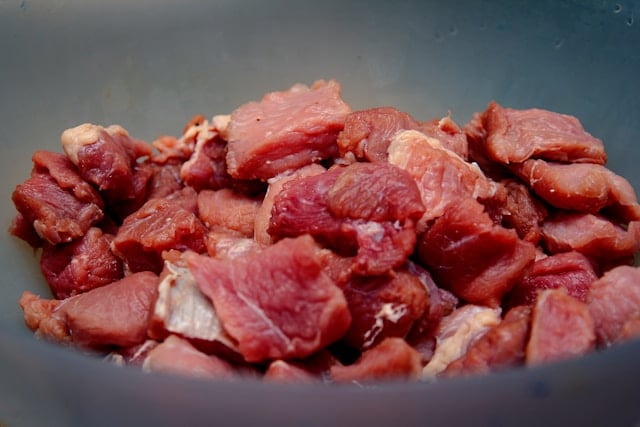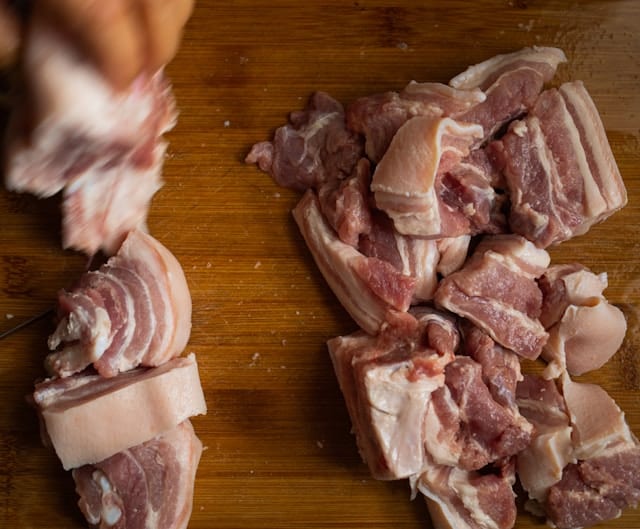According to the Food Safety and Inspection Service, pork is the most consumed meat globally. However, in the 1970s, American pork consumption declined as people pursued healthier lifestyles and opted for leaner meats.

When purchasing pork, it’s crucial to observe its color, ranging from pale pink to dark red. Understanding how color influences meat quality will help you select the best cuts.
High-quality pork typically exhibits a bright, reddish-pink hue, indicating freshness. The specific shade also depends on the animal’s part. Areas with more blood vessels, like the neck, shoulders, and front legs, tend to have darker meat. Conversely, sections with fewer blood vessels, such as the loin, hind leg, and rump, present a lighter color.

Be cautious if the pork appears purple or dark red, as this may suggest the pig wasn’t alive at slaughter. Additionally, dark bruises from blood clots could indicate the animal was ill.
A slightly darker color might mean the meat is fresh and sold soon after slaughter. In contrast, very light-colored pork with bubbling could indicate water injection to increase weight, compromising freshness.
Aim for cuts with pink or bright red meat and firm, white fat, as these are signs of freshness. If color isn’t a definitive indicator, rely on smell; fresh pork has a faint fishy scent. A strong odor is a red flag.
Finally, touch the meat. It should feel slightly moist, not sticky. By considering these factors—color, smell, and texture—you can confidently select high-quality pork for your meals.
